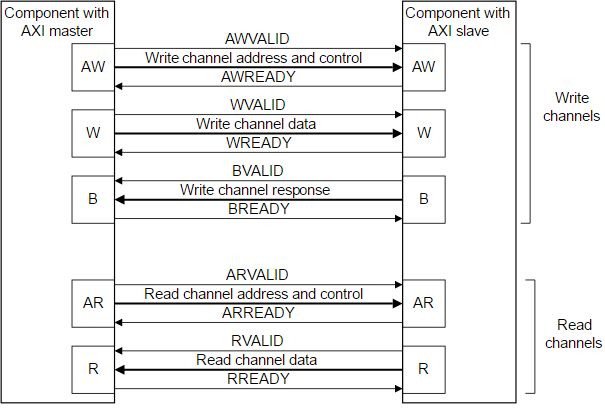I am a Verilog user trying to make sense of VHDL code of AXI4 master bus functional model (BFM).
I have a few questions from the above code:
What would the block diagram of the code look like (how are components connected with each other)?
Lastly, what is the use of the FIFO? I mean to connect AXI master to AXI slave, can't one connect the appropriate signals directly as shown in the picture? What purpose does the FIFO serve here and what if it is removed?

